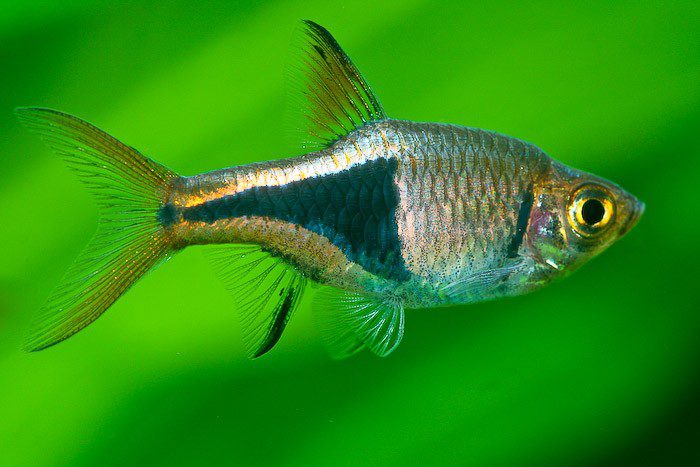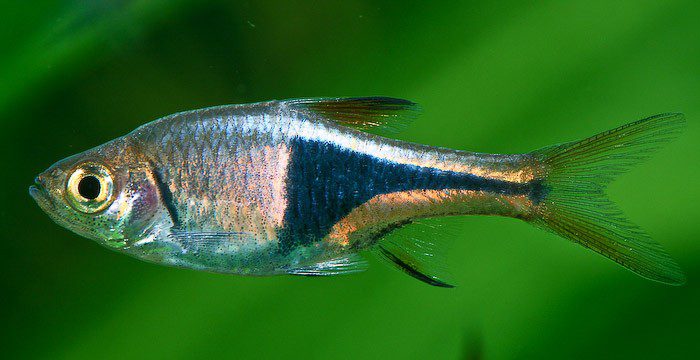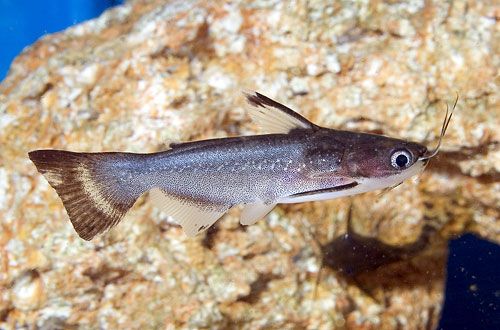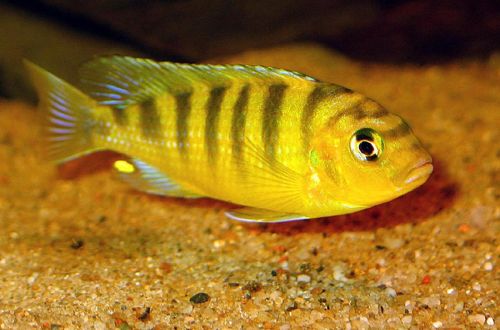
Rasbora Harlequin
Harlequin Rasbora or Cuneiform Rasbora, scientific name Trigonostigma heteromorpha, belongs to the Cyprinidae family. One of the most popular aquarium fish. It began to be kept in aquariums at the beginning of the 20th century, and now the species has changed significantly due to selection forms. There were such subspecies as the Blue Harlequin, Black Harlequin, Golden Harlequin, etc.

This species is often confused with related Rasbora species such as ‘Rasbora espes’ and ‘Rasbora Hengel’ due to their similar appearance, although the Harlequin Rasbora is somewhat larger. Until 1999, they really belonged to the same species, but subsequently were separated. In most cases, in pet stores, all three species are sold under the same name, and amateur sites dedicated to aquarium fish are full of numerous errors in the description and accompanying images.
Requirements and conditions:
- The volume of the aquarium – from 80 liters.
- Temperature – 23-28°C
- Value pH — 5.0–7.0
- Water hardness – soft (5-12 GH)
- Substrate type – any dark
- Lighting – subdued
- Brackish water – no
- Water movement – slow current or still water
- Size – up to 5 cm.
- Food – any food
- Life expectancy – from 5 to 6 years
Contents
Habitat
Rasbora cuneiforma was first described in 1904. There are references to an earlier time, but it is believed that they describe a different species. The fish is distributed throughout Southeast Asia on the mainland and islands. In nature, it lives in forest channels shaded by trees, small streams and peat bogs, where the current is either absent or very weak. The water in these reservoirs often has a yellowish or brown tint due to the decomposition of organic residues (leaves of trees, herbs, fruits, etc.).
Description

The fish has a modest size, only about 5 cm, the shape of the body is not remarkable, which cannot be said about the color. It can range from pale pink to bright orange with a copper sheen along the upper and lower parts of the body. A characteristic feature of the species is the presence of a black mark in the form of a triangle elongated towards the tail, which has a blue or purple tint. Artificially derived forms have a different color, depending on which they received other names: Blue Harlequin (body color is blue), Black Harlequin (color is as dark as the triangular spot) and others.
Food
An omnivorous species, in nature it feeds on small insects, worms, crustaceans and zooplankton. In a home aquarium, a diet of dry food (flakes, pellets) is recommended to be diluted with live foods at least twice a week, such as bloodworms. Or use a natural dry bloodworm. The addition of vegetable food (small pieces of lettuce, spinach) is welcome.
Maintenance and care
For successful maintenance, it is required to provide slightly acidic water, the best way is a filter with filter material that acidifies the water. Depending on the size of the tank, set the desired power, keep in mind that the fish are not accustomed to the current that a working filter can create. Water should be renewed once a month for at least a quarter. Lighting is subdued, such as under the canopy of trees. The design uses rooting plants with large leaves reaching the surface. Dense plantings which are located along the side walls, floating plants will provide additional shade. The soil of any dark material, you can diversify with pieces of stained wood, snags.
Social behavior
Compatible with most of the same peaceful small fish. They are kept in groups of at least 10 individuals, thanks to which maximum coloration is achieved, since males have to compete for the attention of females with a large number of relatives. A small flock (less than 10 individuals) can be a nuisance to other tankmates, as the Rasbora Harlequin will try to attract them to their game, and not all types of fish are ready for such attention.
Sexual differences
Males differ from females in smaller sizes and a slightly different shape of the black mark on the body. The triangle is more rounded, and its vertices seem to be drawn further.
Breeding / breeding
Breeding requires a careful approach and a separate tank. The spawning period can only begin if high protein foods are included in the daily diet for a month.
While the fish are fattening, prepare a separate tank with a volume of at least 40 liters and fill it with water no more than 20 cm. From the equipment, a simple filter with a sponge, installed at low power, lighting is enough that comes from the room / room. Live or artificial plants with wide leaves are required in the design; caviar will be attached to them. Soil of large pebbles.
When the males become brighter colored, and the female’s abdomen fills up, the couple is placed in a separate tank and continues to be fed with high-protein foods. Spawning may begin after a few days. The male arranges a mating dance, circling near the female, and points to the plant he likes, it is on its leaves that the eggs will be laid. The eggs are attached to the lower surface of the leaf, the fallen ones roll over the pebbles and become inaccessible to parents who are not averse to feasting on their caviar. After spawning is completed, the fish are placed back in the general aquarium.
In the tank, lower the water level to 15 cm, make sure that the eggs are not above the surface of the water. A day later, fry appear, and after another 3-5 days they begin to swim freely in the tank.
Diseases
In favorable conditions, diseases are quite rare, they can be provoked by a decrease in water quality and the introduction of sick fish into a common aquarium. The symptoms and treatment methods are described in detail in the “Diseases of aquarium fish” section.





